By LisaMarie Martinez
August marked an annual transition for students of Escuela Tlatelolco Centro de Estudios, the Chicano educational institution with the colorful, symbolistic mural facing Federal Boulevard in northwest Denver. The year-round, nonprofit school celebrated progress with the graduation of kindergarteners to 1st grade and 8th graders to high school.
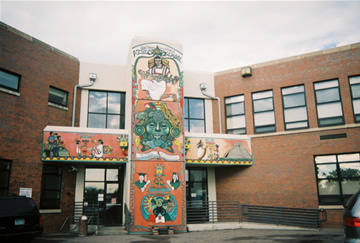
Founded in 1970 by Rodolfo “Corky” Gonzales, one of the central leaders of the Chicano movement, Escuela was designed to provide an educational environment that would empower the youth of the Chicano community. The school was named after the 1968 massacre of over 1,500 workers, students, and children who were protesting political and social conditions in Mexico City, at the Plaza de Las Tres Culturas, also called “the Tlatelolco.” The name “Tlatelolco” honors the indigenous ancestors’ commitment to education, as well as commemorates those who lost their lives for their people.
Through the Crusade for Justice, a Chicano/Mexicano civil rights organization founded by Corky, a freedom school program was developed for disempowered Chicano/Mexicano youth. Its purpose was to increase interest and participation in the educational process through the study of Chicano/Mexicano history and fostering a sense of cultural and self pride. Located at 2949 N. Federal Blvd. in the heart of the Latino community, Escuela is open to all races and serves children from three years of age to 12th grade.
“One of the many things I always wondered about my culture was why we would make tamales during Christmas time, and Escuela has taught me a lot about my culture including that,” said Tamara Gallardo, the mother of high school freshman Vanessa Garza.
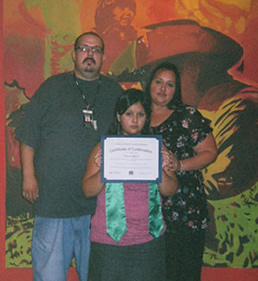 “I like the teachers at Escuela because they have helped me become more culturally aware,” said Vanessa, who celebrated her Continuation from 8th to 9th grade along with six other students in August. “I like the teachers at Escuela because they have helped me become more culturally aware,” said Vanessa, who celebrated her Continuation from 8th to 9th grade along with six other students in August.
Escuela’s mission is to educate its students to contribute to a better world, and serve the greater good, through curricula based upon four educational cornerstones. These emphasize the ability to use critical, creative thinking, express ideas orally and in writing artistically and mathematically, develop and communicate a culturally respectful, socially just and politically progressive vision, and lead a life of spiritual growth and discovery with healthy decision-making.
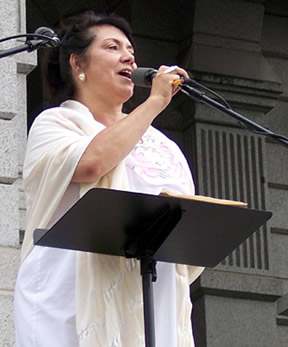 Nita Gonzales, the daughter of Corky, is the president and CEO of the school, which offers classes for 3- to 5-year-olds in the Circulo Montessori program, 1st through 8th grades in the Montessori program, and 9th through 12th grade in its Upper School program. The educational program is based on Maria Montessori’s theories of child development, in which children learn in a prepared environment designed to maximize independent learning and exploration. Nita Gonzales, the daughter of Corky, is the president and CEO of the school, which offers classes for 3- to 5-year-olds in the Circulo Montessori program, 1st through 8th grades in the Montessori program, and 9th through 12th grade in its Upper School program. The educational program is based on Maria Montessori’s theories of child development, in which children learn in a prepared environment designed to maximize independent learning and exploration.
“Escuela has a peace and justice, multi-age, and multi-grade sense of learning communities within it that matches how you learn within families,” said Gonzales.
Each multi-age, multi-grade class is called “casa,” the Spanish word for house, and consists of students who are assigned together for several years. They are named after indigenous nations, such as Casa Apache or Casa Oaxaca. A feature of these classes is a daily discussion of current issues, personal or academic, guided by faculty. The goal of the discussion is to teach problem-solving techniques to help the youth deal with the stressors of adolescence, and to reinforce the close teacher-student relationship as well as a sense of community within each casa.
The Escuela program is also based on the empowerment education model developed by Brazilian education reformist Pablo Freire, which supports the need for students to express their individuality.
“We have a responsibility to make the community, the world a better place through our community service,” said Gonzales.
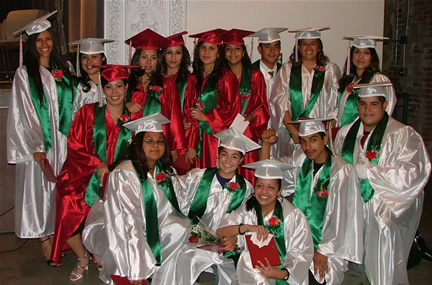
Students are required to complete 360 hours of community service as a graduation requirement, including school-wide volunteer programs such as a bottled water drive for Hurricane Katrina victims in 2005. Through this requirement and its emphasis on collaboration, problem-solving, conflict resolution, and holistic activities, the school teaches values necessary for full participation in society such as compassion, human dignity, tolerance, appreciation of diversity, cooperation, and social justice.
“My son, Solace Norvan Massey-Welton, has been involved in peace marches and has been taught humanitarian lessons that could not have been learned in public schools,” said Neena Massey, teacher of Circulo’s lower elementary students.
“Corky has given me a sense of community, and Escuela has given my daughter a sense of community,” said Judith Gomez, mother of Alma Gomez Martinez.
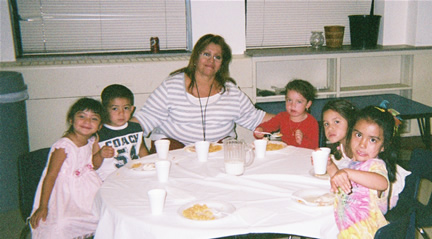
Last month, Solace and Alma joined 10 of their peers at the Circulo Montessori Passage celebrating their graduation from kindergarten to 1st grade.
All Escuela teachers are bilingual, and by graduation day, so are many of the students. Spanish-speaking students are taught in Spanish, with English as a second language, and vice versa.
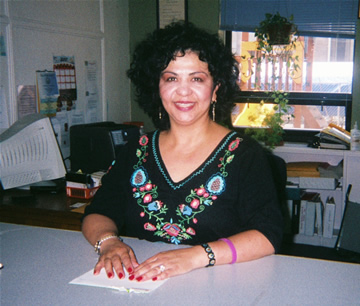 “Escuela is home for me. It has taught me about the inclusiveness of my culture. I have become a more authentic person because I know myself and my value system, and I now have a lot more pride in being a Mexicano, Chicano, and Latino,” said Mireya Velazquez, the receptionist and choir director. “Escuela is home for me. It has taught me about the inclusiveness of my culture. I have become a more authentic person because I know myself and my value system, and I now have a lot more pride in being a Mexicano, Chicano, and Latino,” said Mireya Velazquez, the receptionist and choir director.
The term Chicano refers to the Mexican, Mexican-American, and similar Latino cultures, whereas the term Hispanic is considered to refer to those with heritage based in Spain. The Mestizo culture, which is predominately of Spanish and American Indian descent, has been referred to as Latino as well. It has become a common practice to use the terms Latino and Hispanic to refer to all Spanish-speaking cultures, but in the Latino communities, the usage of Hispanic and Latino is not interchangeable for they each represent a different cultural heritage and a different sense of pride.
“Escuela is the centerpiece of the Chicano community: geographically, historically, and culturally,” said Andres Martinez, the father of 1st-grader Alma.
“I was born in Guatemala and am from the Mayan culture. I didn’t know much about my culture, but this school allowed me to learn and teach about it,” said Dora Renee Kyser, the Circulo teacher for 3 to 6 year olds.
Escuela offers various supportive resources to both students and parents throughout the year. El Centro Cuepopan, Spanish for The Center of Spirit Blossoming, is an after-school program for youth from 1st to 9th grades and their families. A family service worker assists high-need families, and support staff is available for direct interaction with students and their families.
“I come from having been a victim of domestic violence and Escuela has helped me educationally and shown patience with my son, Victor Infante, by focusing on his schooling so that he can focus on it as well, as opposed to focusing on his domestic violence experience,” said Claudia Infante.
Francisco Gallardo had been in gangs since 1989, but through the help and support of Escuela he turned his life around, graduated, and become a positive role model for his daughter, Vanessa, who is now in 9th grade.
“I suffered from a lot of self-hatred and I learned about my culture, myself, through Escuela. It taught me how to do for myself and not to expect handouts from others, nor to blame others, but to see myself in other cultures and to be less fearful of them,” said Gallardo, who is now the program director at GRASP, the Gang Rescue Support Project in Denver.
School President Gonzales is very passionate about the legacy that her father left for her and society as a whole.
“My father not only left the legacy of Tlatelolco, but he also gave us the gift of self, pride, identity, courage, and political consciousness," she said. "To him, you had to be a person who stood up against racism, even within yourself. He was very adamant about thinking critically, and would express it in his poetry. I feel his presence when people stand up and speak out against injustice. We must learn by example and stand on our own to be a better person. The best legacy you can lend to anyone the likes of Cesar Chavez, Corky Gonzales, Ghandi, or Martin Luther King, Jr. is to get off your butts and stand up; stop whining and complaining that they are not here to do it for you. We do it for ourselves, and if we don’t, then we didn’t learn the lesson!"
Editor's note: The school year for Escuela Tlatelolco Centro de Estudios begins Sept. 4. For more information, visit the Web site at www.escuelatlatelolco.org.
Return To Top |
